In the wake of the global Coronavirus (COVID-19) pandemic, immersive technologies have been thrust into the limelight as a potential solution to organisations suddenly finding themselves having to enforce working from home for their employees, or seeing events and travel arrangements cancelled. As a result there is a mixed bag of coverage around the viability of VR for remote work and collaboration use cases.
One use case for VR that has been growing in popularity and capability over the past few years has been around multi-user, social platforms, allowing users to meet in order to work and play together within their headsets from home or the office. Some platforms are focused more on the ability to enable virtual social gatherings, whereas many other target specific areas of work, such as remote collaboration, reviewing models or holding meetings.
Beyond just the potential immediate need with the requirement in many countries for remote, home working, there are many other benefits to these platforms that will hopefully become apparent to you whilst reading through the list. Let’s have a look at some of the key benefits:
Whilst time and the slower-than-expected growth of the VR industry and wider-adoption beyond just gaming uses hasn’t been kind to everyone, there are a number of viable options that cover most VR hardware platforms available, depending upon your specific need.
Although video conferencing to generally deemed easier, since most people (within the target group of users,) have access to a work laptop and/or mobile phone to use, many of the VR applications listed below also have a web or desktop client mode, so you don’t always need a VR headset to access.
Some of these are available now for free access, with or without premium subscription options, some are smaller, fledgling tools that we have had the opportunity to test out privately ahead of launch, some are only available directly through the studio creating them on a commercial subscription basis. Finally, some aren’t actually available yet, or you can pre-register a sign-up but ultimately worth including in the list for awareness purposes.
Note that we are only looking at shared VR spaces and applications that enable remote collaboration, not shared VR hardware like projection domes etc, that allow multiple people in the same space; these are not useful in regards to home working and flattening the curve. Also note that whilst they say a picture says a thousand words, for many of the applications listed below that allow customisation of avatars, the worlds and more, the singular image chosen is not always fully representative of the experience.
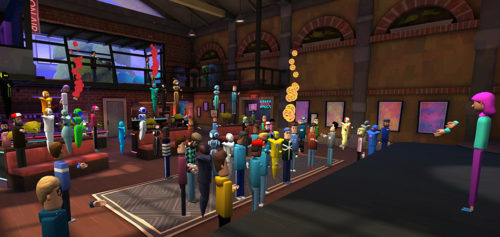
Originally founded in 2013 with the initial product launched in 2015, AltspaceVR nearly became one of the almost-rans until Microsoft acquired the platform in 2017. Since then, AltspaceVR has seen a growth in users and uses, with a strong, supportive community built up around collaborative learning, sharing of knowledge and of course, being social and hanging out.
AltspaceVR was recently one of the main leading platforms supporting the ‘Educators in VR International Summit’ event, a 6-day long virtual event hosting over 170 speakers across a range of topics from education to design and development to wider philosophical musings on and around the immersive technology sectors. You can read a very lengthy, detailed write-up of the event from the organisers with lots of lessons learned for anyone else thinking of using VR social platforms for organising events online.
The platform also allows power users to create their own rooms within the system to customise the spaces to their needs – a getting started guide points budding virtual worlds builders in the right direction. Some pre-configured rooms allow for presenters or room admins to have control over a big presentation screen and pull external presentations from slides.com into the session for all attendees to see.
Attendees are represented by cute, blocky characters with a degree of customisation for free with additional cosmetic items available for a cost, beyond the human and robot based options.
AltspaceVR is widely supported by all the major platforms and VR hardware devices, including: Oculus Rift, Oculus Go, Oculus Quest (via SideQuest), HTC Vive and Windows MR headsets. If you do not have access to one of those VR headsets, then there is also a 2D desktop version available.
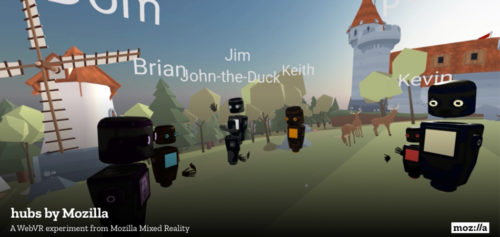
From the same company behind the Firefox web browser, Mozilla Hubs builds upon the growing capabilities of webXR standards, by creating a virtual world platform that technically needs nothing installed prior to joining in online. Through Mozilla’s own creation and scripting tool Spoke, users are able to create content easily for use within the worlds for your customisation needs. Being webXR based, it currently looks a little more simple than others in visual style and capabilities but the benefit of this is that anyone can hop in from a mobile phone browser to a desktop to a wide range of mobile to standalone and full VR headsets. Once a room is created, a simple code link can be shared to quickly bring other users into that space without requiring huge downloads.

Whilst the Sansar VR platform has only been around for a couple of years, the developers and owners Linden Lab are well known for their earlier, highly popular virtual worlds platform Second Life (which is still going strong today, just not with VR support). Like Second Life, Sansar is looking to create a metaverse with technically impressive avatar customisation and full-body tracking and representation in-world, but also like Second Life, there are adult-orientated areas that enterprise users should be aware of before letting employees freely roam unguided.
The platform also allows custom worlds to be created with access controls available but this time there is more emphasis on graphical quality and fidelity of the spaces, reducing the current supported VR hardware down to tethered PC VR headsets only, like Oculus Rift, HTC Vive and Windows MR devices. Popular public worlds with users tend to fall into the technolust, ’90s cyberpunk, sci-fi styled spaces, where everything is very dark and gritty, or based upon popular sci-fi TV series but the world creation process empowers you to make your worlds to your liking or needs.
Similarly, the avatars are typically far more realistic where users are looking to build online personas they grow and embody over the years, with full-bodies represented in high fidelity models that can be rigged for mo-cap live input from the real world user.
Another social VR platform that also sprung from ex-founders of Linden Lab, called High Fidelity, unfortunately shut it’s virtual doors a few months ago in order to refocus and reassess it’s position within the virtual space. Aimed much more at education and collaboration, it’s a great shame to see the platform shutter at this stage of headset adoption.

A relatively new entry into the social VR space, Somnium Space is built upon blockchain to create a persistent, user-owned world, looking to challenge the concepts of virtual land ownership similar to Second Life and Sansar. Through the use of crypto-currencies, it allows users to create and upload 3D assets to sell to other users for their avatars, homes or own worlds they are building.
The desktop client appears to offer a powerful world-building tool to create realistic or fantasy worlds as desired. VR support is limited to PC VR headsets like Oculus Rift, HTC Vive and Windows MR devices currently, but standalone headset support is planned.
A rapidly growing community around the space is already establishing regular news updates, assistance for newcomers, knowledge sharing and welcoming those who wish to explore the possibilities of virtual land ownership; some large names have already started to create their presence within the world for a new level of virtual presence and persistence.
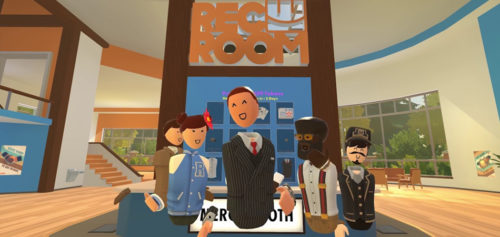
Popular with the kids and adults alike, Rec Room is very much aimed at the fun side of life, with more social, multiplayer games than meetings, but that’s not to say a private room for a meetup cannot be created and it could be fun to do some laser tag or treasure hunts in-between presentations to help alleviate the boredom of being stuck indoors.
The avatar style is akin to AltspaceVR with floating heads and hands and cartoony bodies, but the platform support includes Sony PlayStation VR headsets, which is the highest selling VR headset currently with over 5m units sold. There’s a high chance one of your employees might have bought one of these for their children (or themselves, which is also perfectly acceptable) and could requisition it for working at home remote meeting purposes.
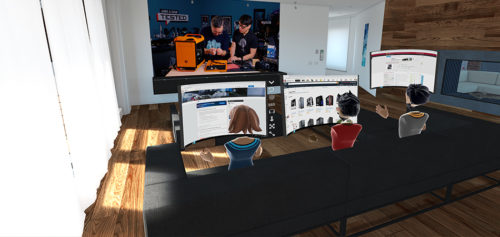
Whilst technically a shared-viewing platform, again there’s no reason why you couldn’t make use of Bigscreen and the social capabilities to meet up in VR. Users can share their desktop screen for a private room of users to see, so you could watch back online talks and presentations from events together, or review video trailers or just take a break and watch that volleyball movie. Bigscreen is also available for all main popular VR headsets.
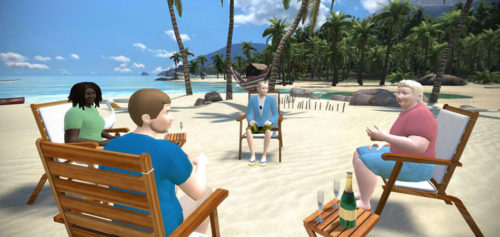
Designed for smaller groups of four users, vTime supports Oculus Rift and many older mobile VR platforms, if you still have one of those knocking about.
Whilst accurate numbers are widely shared or known, it is generally believed that VR Chat is the largest virtual worlds platform with the most users but the majority of these are coming from the 2D desktop version. Also in regards to suitability for work purposes, although it was purchased by HTC Vive, being completely open with a large user base, it may not be entirely suitable for use, with users able to upload any 3D model as their avatar, you will typically be faced with an army of anime cartoon characters and other copyright-infringing avatars; think The Oasis scenes from Ready Player One. You are able to create your own private spaces however to maintain focus on work.
OK you can call us out for bias with this one *but* we have used our social multiplayer game Loco Dojo for meetings! Supporting up to four players around the metagame table with VOIP enabled, it’s possible to hold a remote meeting and if decisions get heated, use one of the 16 minigames to settle the outcome! Available for Oculus Rift, HTC Vive and Windows MR devices with Sony PlayStation VR, Oculus Quest and Vive Focus Plus builds available if you ask nicely.
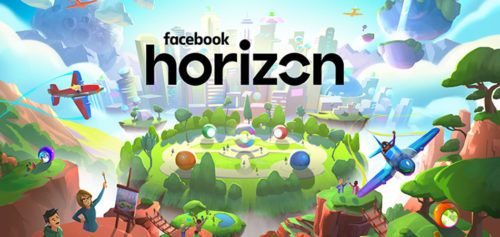
Announced at Oculus Connect 6 (OC6) in 2019, Facebook Horizon is the bigger sibling of their initial forays into shared, social spaces, mixing lessons learned from Facebook Spaces, Oculus Rooms and Oculus Venues, plus all the good customisation, world-building aspects, into a singular virtual platform. However at present, you can only register interest and no public beta has been announced at this stage but we expect something to be available to users at some stage in 2020.
So these are the main social space contenders currently available for most VR headsets, but there are also a number of emerging platforms and solutions built around specific enterprise and business use cases, primarily at shared learning, meetings and collaboration.

The Engage platform, from our friends over at Immersive VR Education, (known originally for the Apollo 11 and Titanic VR experiences,) is aimed very much more at the education space, allowing teachers, students and users to create their own worlds full of a large library of 3D assets for knowledge sharing and learning.
However it has been successfully been used for meetings and conferences, with pioneering leader of virtual education Steve Bambury running #CPDinVR series of meetups there for a number of years now, and recently HTC Vive have announced that they are going to be using the platform for their next worldwide event. The platform makers are looking to branch out into enabling users to create training scenarios within the system; a number of example demonstrator concepts can be found on the website.
Like Sansar, Engage aims for the more realistic avatar representation with full body motion-tracking for 1:1 avatar animation and movement, based upon user inputs. The platform offers a powerful avatar creation tool where users can upload a 2D photo of their face to map onto their 3D avatar for that more lifelike look.
Engage supports a wide range of VR headsets, from Oculus Rift and Oculus Quest (again through SideQuest), the HTC Vive family of devices as well as Vive Focus, and the usual range of Windows MR headsets through SteamVR. Like AltspaceVR, there is a 2D non-VR desktop client available as well.

First up is a change to all the others so far in that Spatial is aimed at AR headset users (i.e. HoloLens and Magic Leap) and therefore with current adoption levels of these devices, is likely to be out of reach of many users. However they are accepting sign-ups and enabling access in controlled roll-out over time so if you do have one of these devices available, be sure to check it out. The benefit of being AR-based is that you can mix and match use cases, with some people in the same room physically together augmenting the space around them with holographic representations of remote co-workers present too. Currently the free level of access, once granted, supports up to 4 users for a 45 minute session, whereas the enterprise options scales up to 12 people with unlimited time and rooms.
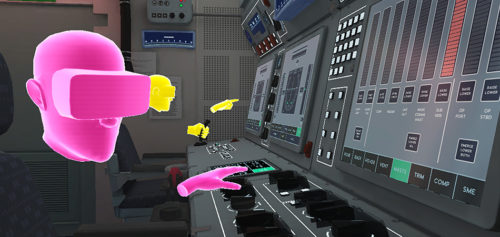
Our good friends over at Immerse are building a name for themselves with their collaboration and data-collection Virtual Enterprise Platform (VEP) for VR. Aimed more at training, learning and development and simulation than meetings or presentations, they are focused on creating the underlying layer that connects content and user data to existing management systems, to help ensure validation of efficiencies and effectiveness is possible, enabling stakeholders to prove their KPIs driving ROI for immersive technologies within learning. For users without VR, a simple web link system provides quick and easy access for desktop viewing of a session.
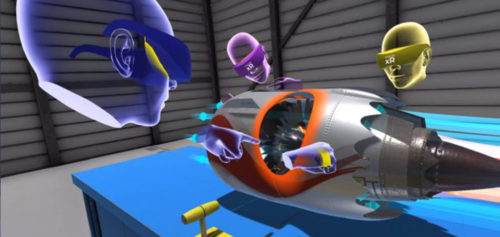
Similarly, our local VR dev cohorts Future Visual, whilst keeping some things close to their chests at the moment, are building out VisionXR, a multi-user collaboration platform that impresses with early videos of the range of devices supported, from VR to AR to tablet to desktop and browser, to ensure access is not limited to the headset. They currently offer a service where you can upload your own content or a managed, custom option where bespoke content can be created for you.
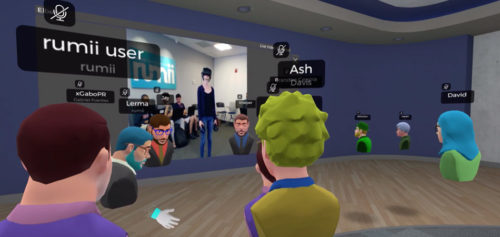
Enterprise-focused Rumii from Doghead Sims has a variety of options from a straight-forward turnkey solution that gets users up and running quickly out of the box, to bespoke white label versions that can be customised to your branding or an entirely custom solution that can be created to incorporate specific use cases and needs accordingly. Currently supports PC VR headsets and Oculus Go, with a PC, mobile and Mac desktop version available too.
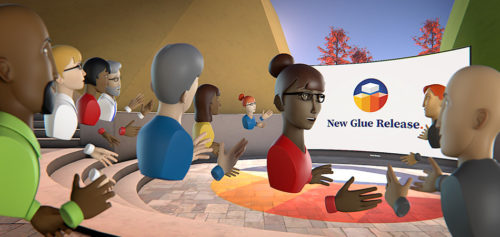
Recently updated with a slew of new features and user improvements, Glue looks very professional, offering expected enterprise-focused criteria such as security of data, customisation, persistence of rooms and assets, and file support. However as a result, access is only available via a bookable demo or direct contact to the sales team, who will look to provide access as SAAS rather than a platform you can quickly hop into but this is fairly standard for many of the enterprise solutions.

Currently inviting users to the early access period, MeetinVR is shaping up to be a quality platform for meetings, talks, presentations, interviews and collaboration. We were recently invited to be interviewed using the system and came away impressed with the platform development and tools available, with bespoke avatars created for us. Expected VR headset support covers the main devices, including HTC Vive, Oculus Rift, Go and Quest, Windows MR and more to be announced.
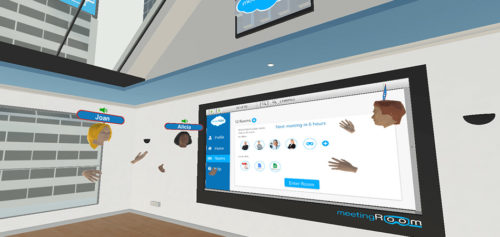
Aimed purely at virtual meetings, MeetingRoom provides a range of levels of service depending upon your organisation size and needs. For a straight-forward solution with base tools like whiteboard, the ability to display a wide range of file formats, it’s a distraction-free way to hold a virtual meeting online. 2D Desktop and PC VR versions are available directly with versions for standalone devices like Oculus Go and Quest, Pico and Vive Focus are available upon request (likely because these need to be sideloaded with assistance).
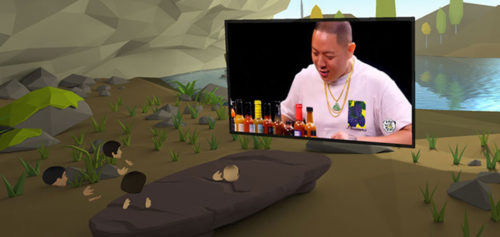
Offering meeting, collaboration and shared desktop features, Dream is available for PC VR headsets (Oculus Rift and HTC Vive) with Google Drive, Dropbox and YouTube integration, along with an embedded web browser, all of which can be positioned within multiple virtual windows within the virtual world space.

Another solution that allows you to bring virtual monitors into the virtual space for collaboration is ImmersedVR, available on Oculus Go and Quest, with a range of fairly low pricing options per user.
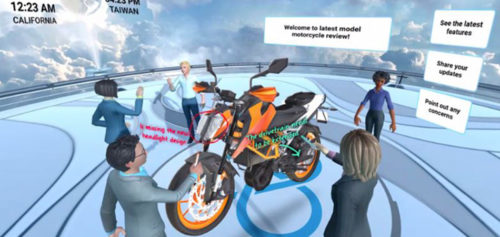
Announced back in 2018 but recently pushed to the forefront of attention, Vive Sync is a collaboration tool for enterprise users of HTC Vive VR hardware across their broad spectrum of products, from HTC Vive, Vive Pro, Vive Pro Eye, Focus+ and the modular Cosmos system. Based upon the enterprise offerings from Vive it is a secure gateway into virtual worlds for users of Vive products, with integrated Microsoft OneDrive support for bringing your files into VR.

Offering powerful 3D object and scene creation tools, Sketchbox started off as a greyboxing prototype tool that added multi-user support and now allows users to collaborate and work together to design, build and review in VR. OBJ formats can be imported in whilst FBX files can be exported out for use in Unity and Unreal. Currently supports PC VR headsets like Oculus Rift, HTC Vive and Windows MR devices.
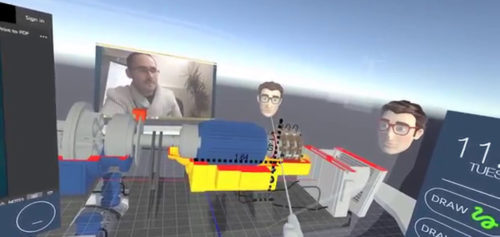
Aimed at CAD designers, Improov by MiddleVR, enables users to carry out collaborative design reviews, work on maintenance and assembly processes virtually, determine best layouts and ergonomic assessments. Supporting all the major CAD files, focus is on accuracy and detail not necessarily performance (these are heavy, unoptimised files for VR, although they have a 3D model streaming system) supporting the usual range of tethered PC VR headsets (requiring the graphical power for CAD) but also caves, multi-channel projection systems, 3D TVs and a variety of tracked add-ons.
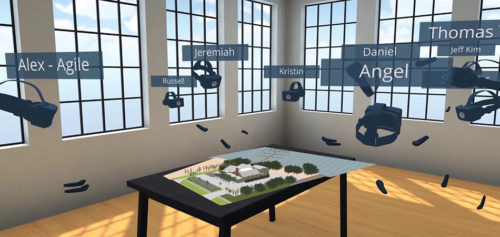
Aimed at the AEC space supporting BIM360, Navisworks, Revit and SketchUp models, InsiteVR is another collaborative enterprise tool for professional designers, supporting HTC Vive, Oculus Rift & Quest, Windows MR with a desktop client also available. Along with viewing files together, users are able to track issues found and highlighted and output PDF reports from sessions.
Planting squarely in the creative space, Masterpiece VR is a powerful 3D VR creation tool that supports multiple users to work together. It’s rapidly growing to add more tools and features to the base set of 3D modelling capabilities, including skeletal rigging and animation configurations all in realtime, in VR together. Currently supporting PC VR headsets, the fully paid options provide 3D modelling capabilities you would typically expect to find in professional offline, desktop-based modelling software.
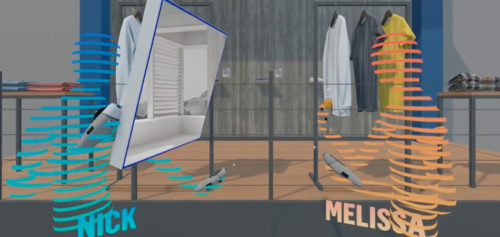
Also aimed more at the AEC sectors, The Wild enables users to import their SketchUp, Revit and BIM360 models to review together, utilising the power of VR to experience 3D models and designs at 1:1 scale. Collaborators can join in from a range of VR headsets including Oculus Rift and Quest, HTC Vive, Windows MR, AR clients and desktop (PC & Mac). The avatar representations are some of the most visually, stylistically pleasing variants to the eye we’ve seen.
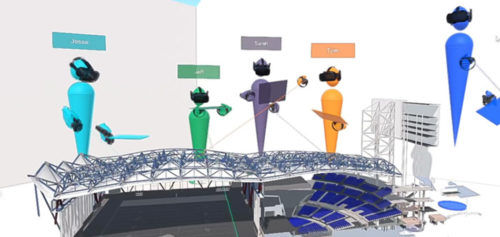
Another powerful AEC-focused solution, IrisVR offers integration with Navisworks, Revit, Rhino and SketchUp database files. VR headset support is wide with PC VR systems such as Oculus Rift, the HTC Vive family, Windows MR, Pimax and Valve Index (all through the SteamVR integration no doubt) as well standalone devices like Oculus Quest. With a heavy CAD feature set, the individual pricing options are on the slightly higher end compared to other solutions.
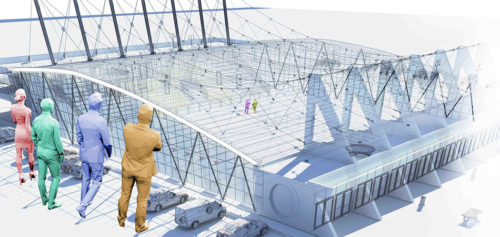
Allowing multi-user virtual viewing of properties, Foresight from local company Percept Imagery, looks to make AEC viewing simple and easy for users, with deployment using 5G to stream high quality 3D/BIM data assets to headsets without large application downloads to low cost headsets, like Oculus Go.
Phew that’s quite a list; there are still many more options and solutions available but these are the ones that we felt were worth looking at and considering, based upon their availability, maturity and professionalism (in most cases…). Am sure there is something there that will enable you and your team to find ways of immersing yourselves in work, improving workflows and exploring unique use cases for VR around remote working. Let us know how you get on!
We’re always happy to talk to you about how immersive technologies can engage your employees and customers. If you have a learning objective in mind, or simply want to know more about emerging technologies like VR, AR, or AI, send us a message and we’ll get back to you as soon as we can.